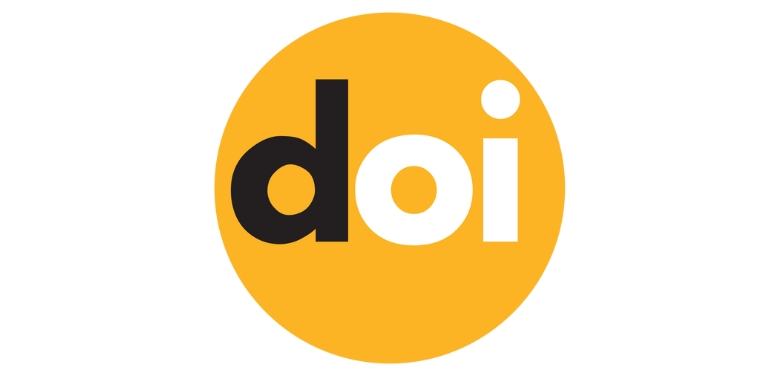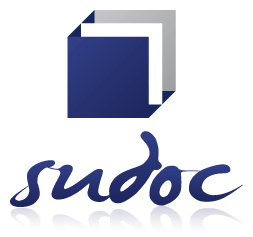Key Factors Affecting the Application of Information Technology in -Iran's Government Organizations Check
DOI:
https://doi.org/10.63053/ijhes.29Keywords:
application of information technology, key factors of success, key factors of failure Iranian government organizationsAbstract
In this article, the results of the investigation of the key factors affecting the use of information technology in government organizations and the importance of these factors in various applications of this technology are presented. For this purpose, first information technology and then by presenting evidence of failure and failure in the application of this technology at the level of Iran and the world, the research problem is defined. In the following, the research method is explained and at the end, the findings of this research,which include 8 main key factors and 34 sub-indices , are presented.
References
Kala Netri, Khalil (1382); "Data processing and analysis in social and economic research"; Published by Shri
Mo Meni, Mansouri (summer 2016); "Statistical data analysis using SPSS"; Publication of new book, first edition.
Fatura Chi. Mohammad Mahdi (1383); "From distance education to virtual university"; From the collection of articles of the Islamic Distance Education Center.
Farahani's grandson. Mohammadreza and Mostafa Parkhwan Razliqi, The role of information technology in the business reengineering process, p. 48, Tadbir, no. 133.
Venkatesh, Davis. F.D (2000); » A Theoretical E¬xtension¬ of the Technology Acceptance model«; Management science, No. 2, pp.186-204.
Hair. j, et.al (1998);» multivariate data analysis«; Forth edition, upper saddle river, New Jersey.
Yousafzai. Shumaila Y, F.Gordon R and P.John G (2007); »Technology acceptance a meta-analysis of the TAM Part 1«; Journal of Modeling in Management, NO.3, PP.251-280.
Legris.Paul, Ingham. John, Collerette. Pierre (2003); »Why do people use information technology? A critical review of the technology acceptance model«; Information & Management, NO.40¬, PP. 191–204.
- How to build a Business For information Technology. Http://gloBal.mci/de/resources/articles/35/keenqa.xml
- Speak Sizing Guidelines, www.IT toolkit. Com
- Corre latiug Success with the Classitication.www.ITtoolkit.com
- yardely,David, Successful IT projects Delivery, Addison- weseley, 2002.
- wysoki, Roberk.,Building Effective project Teams, John wiley & Sons, INC., 2002.
- kPMG,what went wrong. Unsuccessful information Technology prjects, 1997,www.kpmg.com
. why do projects fail,www,etpint.com/whyFail.htm
Avegerou C.; The significance of context in information systems andorganizational change; Information Systems Journal, Vol.11, 2001.
Cabinet Office; Successful IT: Modernizing government in action; London: Central IT Unit. http://www.e-envoy.gov.uk/assetRoot/04/00/08/35/04000835.pdf(25 Jan. 2004), 2000.
Clegg C. & et.al.; The performance of information technology and the role of human and organizational factors; UK: The University of Sheffield, http://www.shef.ac.uk/~iwp/publications/reports/itperf.html (12 Nov. 2003), 1996.
Heeks R., Bhatnagar S.; Understanding success and failure in information age reform; In Reinventing Government in The Information Age, Edited: Richard Heeks, London: Routledge, 2000.
Finlay P.N., Forghani M.; A classification of success factors for decision support systems; Journal of Strategic Information Systems, Vol.7, 1998.
Kanungo S., Chouthog M.; IT planning in India: Implications for IT effectiveness; Information Technology for Development, Vol.8, 1998.
Tiamiyu M.A.; Information technology in Nigerian federal agencies: Problems, impact and strategies; Journal of Information Science, Vol.26, No.4: 2000.
Rose G., Straub D.; Predicating general IT use: Applying TAM to the Arabic world; Journal of Global Information Management, Vol.6, No.3, 1998.
Whittaker B.; What went wrong? Unsuccessful information technology projects; Information Management & Computer Security, Vol.7, No.1, 1999.
Henderson J.C., Venkatraman N.; Strategic alignment: Leveraging information technology for transforming organizations; IBM Systems Journal, vol.38, No. 2&3, 1993.
Yetton P.; Martin A., Sharna R., Johnston K.; A model of information systems development project performance; Information Systems Journal, Vol.10, 2000.
Doherty N.F., King M.; An investigation of the factors affecting the successful treatment of organizational issues in systems development projects; European Journal of Information Systems, Vol.10, 2001.
Khandelwal V.K.; An empirical study of misalignment between Australian CEOs and IT managers; Strategic Information Systems, Vol.10, 2001.
Al-gahtani, S.S.; Computer technology adoption in Saudi Arabia: Correlates of perceived innovation attributes; Information Technology for Development; Vol.10, 2003.
Couger J.; Key human resource issues in IS in the 1990s: Views of IS executives versus human resource executives; Information and management, Vol.14, 1988.
Kunnathur A.S., Shi Z.; An investigation of the strategic information systems planning success in Chinese publicly traded firms; International Journal of Information management, Vol.21, 2001.
McNish M.; Guidelines for managing change: A study of their effects on the implementation of new information technology projects in organizations; Journal of Change Management, Vol.2, No.3, 2001.
Lederer A.L., Sethi V.; Key prescriptions for strategic information systems planning; Journal of Management Information Systems, Vol.13, No.1, 1996.
Kotter J.P.; Leading change: Why transformation efforts fail; Harvard Business Review, Vol.73, No.2 Mar/Apr, 1995.
Aubert N., Rivard S., Patry M.; A transaction cost model of IT outsourcing, Information & Management, Vol.41, 2004.
Rogers E.M.; Difusion of innovations, 4th Ed., New York: The Free Press, 1995.
Legris P., Ingham J., Collerette P.; Why do people use information technology? A crirtical review of the technology acceptance model; Information & Management, Vol.40, 2003.
Child J., Faulkner D.; Strategies of co-operation; NewYork: Oxford University Press, 1998.
Reich B.H., Benbasat I.; Mesuring the linkage between business and information technology objectives, MIS Quarterly, Vol.20, No.1, 1996.
Zuboff S.; In the age of the smart machine: The future of work and power, US: Basic Books, 1988.
De Marez Lieven S.B., Verleye Gino B.M.; ICT-innovations today: Making traditional diffusion patterns obsolete and
Downloads
Published
How to Cite
Issue
Section
License
Copyright (c) 2023 Authors

This work is licensed under a Creative Commons Attribution 4.0 International License.
The journal is licensed under a Attribution 4.0 International (CC BY 4.0).
You are free to:
- Share — copy and redistribute the material in any medium or format for any purpose, even commercially.
- Adapt — remix, transform, and build upon the material for any purpose, even commercially.
- The licensor cannot revoke these freedoms as long as you follow the license terms.
Under the following terms:
- Attribution - You must give appropriate credit , provide a link to the license, and indicate if changes were made . You may do so in any reasonable manner, but not in any way that suggests the licensor endorses you or your use.
- No additional restrictions - You may not apply legal terms or technological measures that legally restrict others from doing anything the license permits.












